Tiger Bread, also known as Dutch Crunch Bread, has a distinctive cracked and mottled crust, which resembles the markings of a tiger’s coat. The bread’s unique appearance is achieved by applying a paste or slurry on the bread dough before baking, which creates a crackled pattern during the baking process.
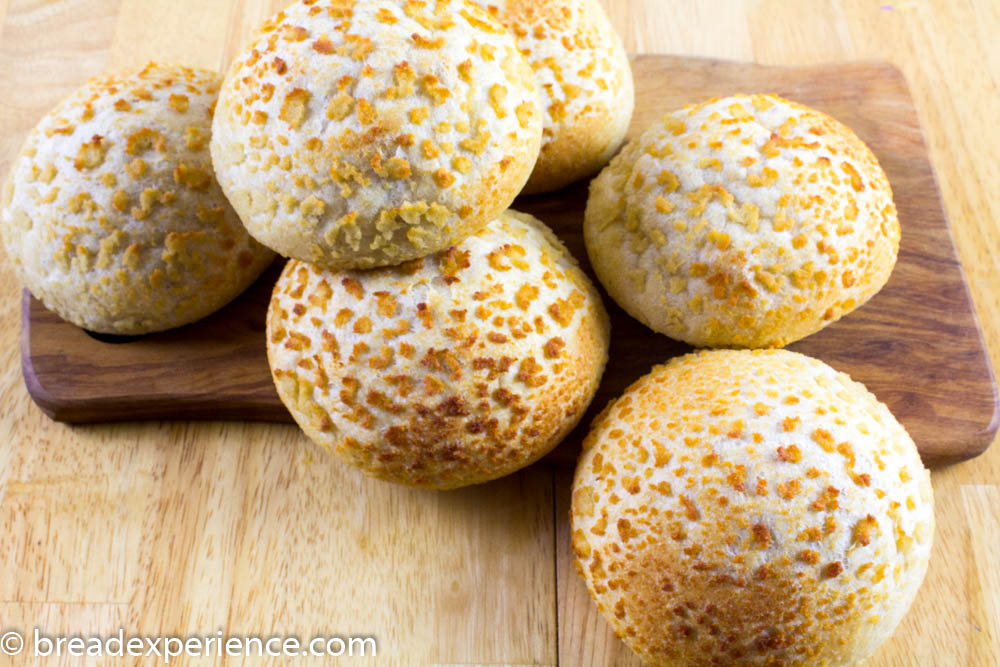
What is Tiger Bread aka Dutch Crunch Bread?
Dutch crunch bread has a slightly sweet and mild flavor, with a soft interior and a crust that offers a delightful crunch. It is commonly enjoyed as a sandwich bread, and used for burgers. My favorite way to eat it is on its own, toasted, and spread with butter.
The traditional paste used for the topping is made from rice flour, yeast, sugar, oil, and water. It is applied to the bread dough just before baking, allowing it to develop a distinctive texture and appearance. The paste acts as a sort of edible paint that cracks and forms a crispy crust during baking, while the underlying bread remains soft and fluffy.
Tiger Bread is typically made using basic bread ingredients such as flour, water, yeast, salt, and sometimes a small amount of sugar or oil. The dough is prepared, allowed to rise, and then shaped into loaves or rolls. The paste is spread evenly on top of the dough, creating a visually striking pattern.
The origin of Tiger Bread can be traced back to the Netherlands. In Dutch, it is called “Tijgerbrood,” which translates to “tiger bread.” The larger version is referred to as Tijgerbroodje and the smaller version (buns or rolls) are known as Tijgerbolletjes.
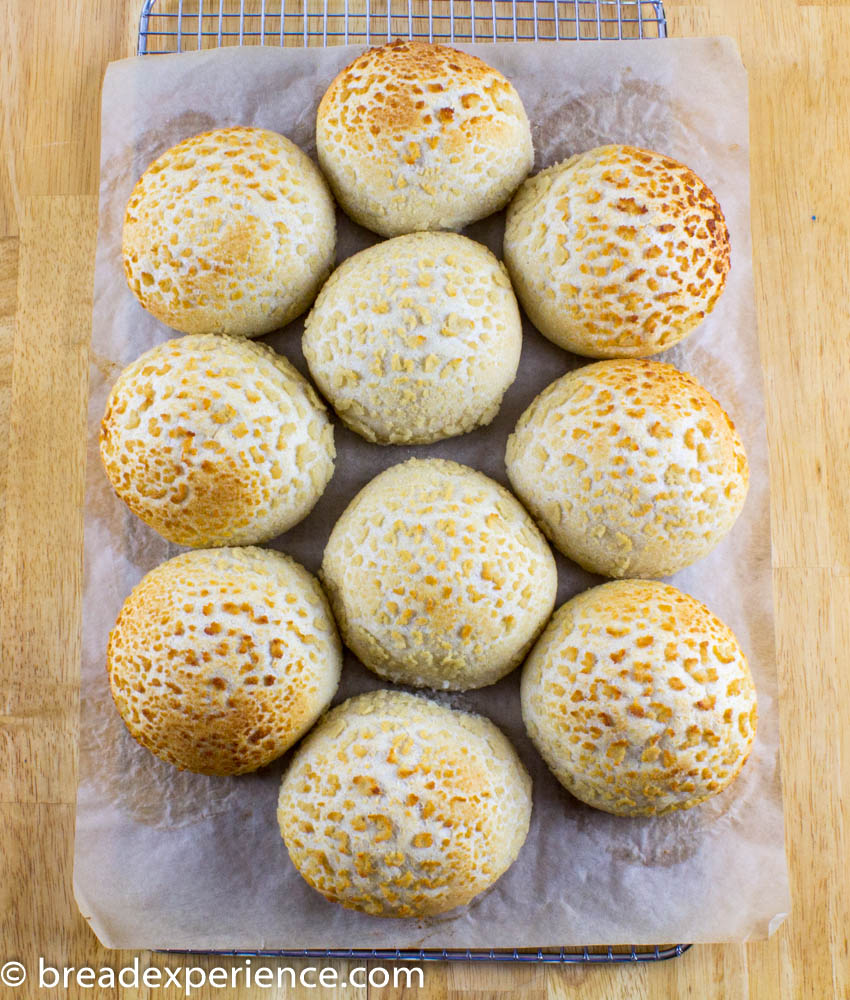
About the recipe for these Tiger Rolls
Karen, of Karen’s Kitchen Stories, chose Tiger Bread as the monthly bake for the Bread Baking Babes. This recipe is from Netherlands-based baker, Ralph Nieboer, one of the administrators of the Artisan Bread Bakers Facebook group. I’ve made several of his breads in the past and have been pleased with the results. This recipe was no exception. I really enjoyed these rolls.
You can find Ralph’s Tiger Bread recipe here and follow him on Instagram and Facebook.
Ralph’s Dutch crunch topping is different from the typical tiger bread in that it includes breadcrumbs. Most recipes just use rice flour.
I’ve made Vienna bread before with a Dutch crunch topping, and I didn’t much care for the rice flour slurry on top.
For topping on these Tiger rolls, I used sprouted brown rice flour and panko bread crumbs. I really enjoyed these bread buns.
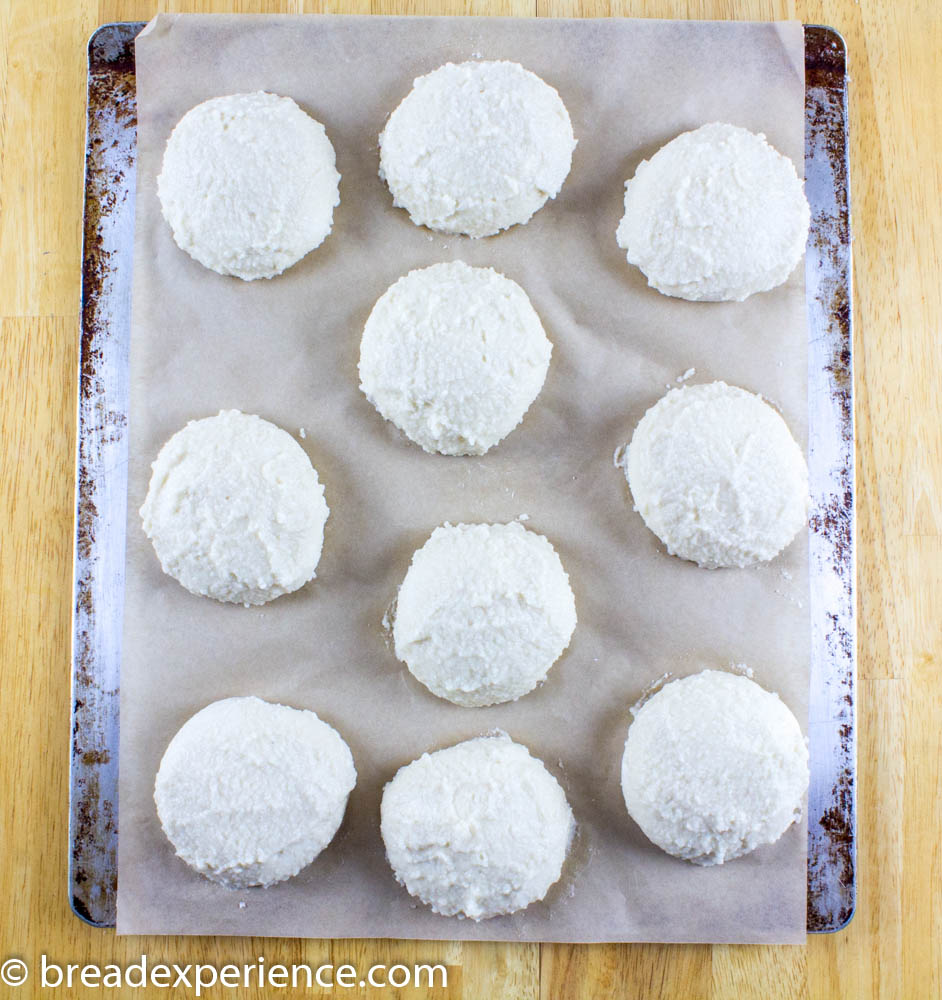
Karen’s notes:
(My comments are in italics)
When you make the topping, it should be thick but spreadable. I used a damp offset spatula to do a final smoothing before letting the rolls go through their final rise. Be sure to let the topping sit before spreading it over the rolls to prevent it from sliding off. I used a small-handled butter knife to spread on the slurry. It worked really well.
Some recipes out there for tiger bread use water instead of milk in the dough, and some use half water and milk. As far as I can tell, they all use butter and many use sugar. If you want, you can add a tablespoon of sugar to this recipe for a little bit of sweetness. I used unsweetened almond milk and omitted the sugar in the dough, but I did add sugar in the topping.
For the preferment, you can substitute 150 grams of active sourdough starter. I used 125 grams of sourdough in my tiger rolls.
You can also substitute about 75 grams of the flour with whole wheat without losing the “spirit” of this bread. I used 100 grams (20%) home-milled white whole wheat flour.
I’ve also seen sesame oil used in the topping rather than neutral oil. I used olive oil.
The topping for this bread cracks as the dough undergoes tremendous oven spring.
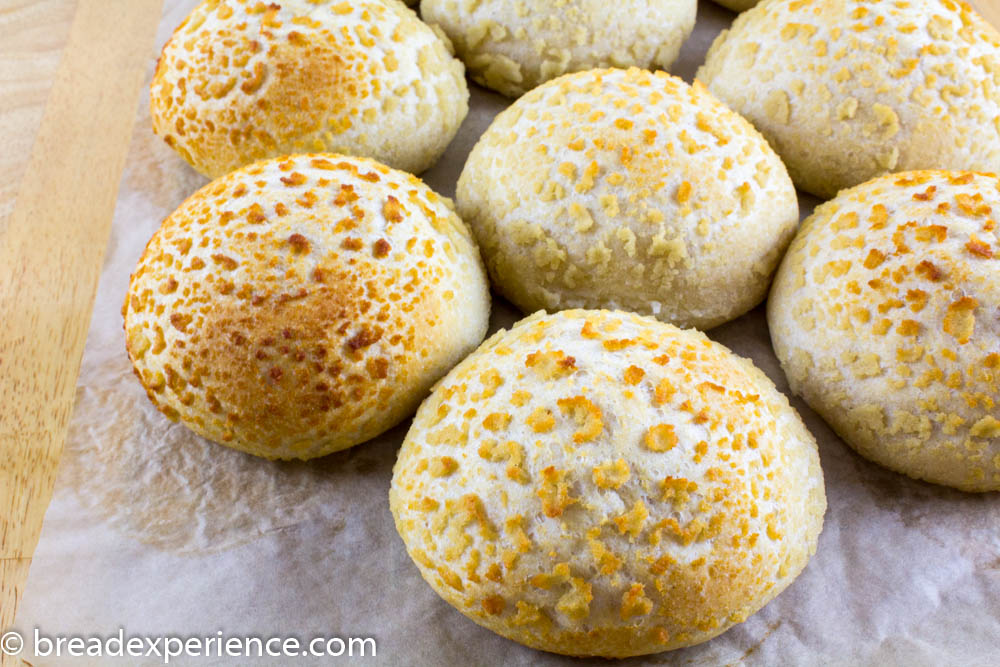
You might enjoy these articles on Dutch Crunch Bread
- https://www.sfgate.com/food/article/dutch-crunch-bread-17635355.php
- https://www.foodandwine.com/news/dutch-crunch-best-sandwich-bread-youve-never-heard
Retarding the dough overnight
After mixing and proofing the dough in the bowl, I placed it in the refrigerator to retard overnight. I enjoyed the results. Although I didn’t capture a photo of the crumb, it had some nice lovely holes.
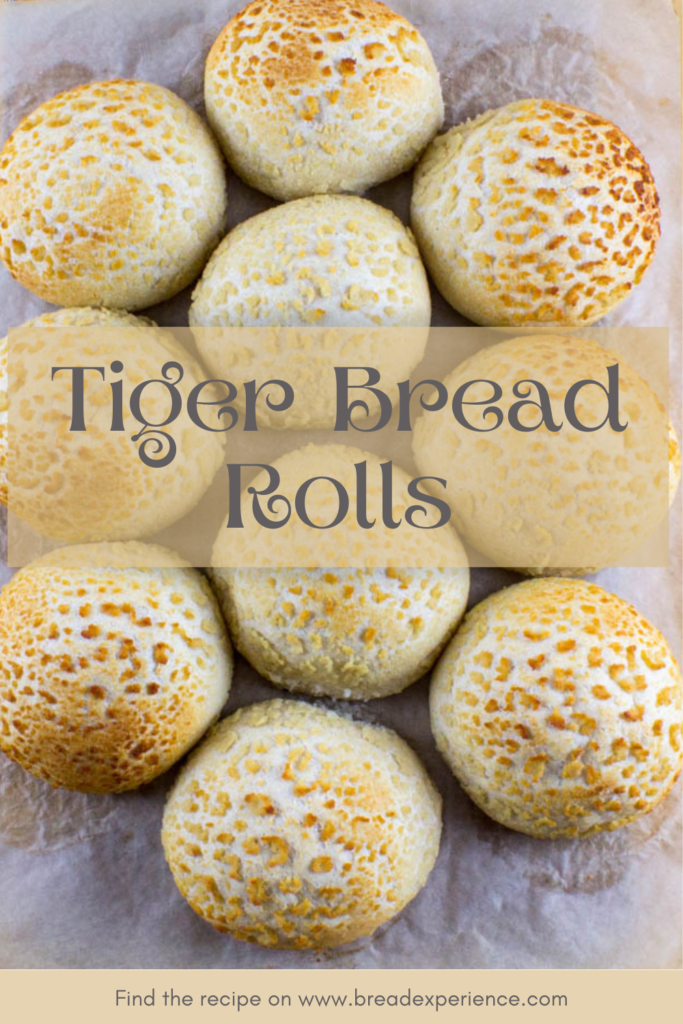
To enjoy the crunchy topping, this bread is best eaten the day it is made; however, the sourdough version will last for several days. Leftovers can be frozen and reheated in the toaster oven.
I followed the metric weights as provided in the formula; however, I’ve also provided the volume measurements in the recipe below. The volume measurements were determined using online conversion calculators.
Print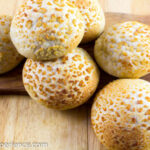
Tiger Bread | Dutch Crunch Bread
- Yield: 10 bread rolls 1x
Description
Tiger Bread, also known as Dutch Crunch Bread, has a distinctive cracked and mottled crust, which resembles the markings of a tiger’s coat.
Ingredients
For the preferment
- 75 grams (1/2 cup) bread flour
- 75 grams (2/3 cup) milk heated to 113 degrees F (45 degrees F)
- 0.3 grams (pinch) instant yeast
For the Final Dough:
- 400 grams (2 1/2 cups) bread flour or all-purpose flour
- 100 grams (~3/4 cup) white whole wheat flour
- 350 grams (~ 1 1/2 cups), milk (dairy or non-dairy) about 75 degrees F
- All of the preferment
- 1.5 grams (~3/8 tsp) of instant yeast
- 37.5 grams ( 2 Tbsp. + 1 1/2 tsp.) softened butter, cut into small pieces
- 8 grams (~1 1/3 tsp.) fine sea salt
For the Tiger Porridge:
- 20 grams (~2 Tbsp.) rice flour (not glutinous rice flour)
- 20 grams (~1/4 cup + 1 tsp.) ground bread crumbs or panko bread crumbs
- 137 grams (~ 1/2 cup + 1 Tbsp.) boiling water
- 1.5 grams (~1/4 tsp) fine sea salt
- 2.5 grams (scant 1/2 tsp.) granulated sugar
- 2.5 grams (~ 1/8 tsp.) vegetable oil
- 1.75 grams (1/2 tsp.) instant yeast
Instructions
To Make the Preferment:
- Stir together all of the ingredients in a small bowl. Cover and let ferment for 12 to 16 hours. * Alternately, you can use 125-150 grams of recently fed and active sourdough starter.
To Make the Final Dough:
- Mix the flour and milk together by hand in the bowl of a stand mixer. Cover and let sit for 1 1/2 hours.
- Add the rest of the ingredients and mix on low for 8 minutes, and then medium high for 3 minutes. The dough should be tacky but not sticky. I added a tablespoon of extra flour to bring it together.
- Form the dough into a ball and place it in a bowl or dough rising bucket. Cover and let rise until doubled, about 60 to 90 minutes.
- At this point, you can proceed with shaping and baking the rolls, or retard the dough overnight in the refrigerator and bake the rolls the next day, depending on what works best with your schedule.
To Make the Porridge:
- While the dough is rising, in a smallish bowl, mix the rice flour and bread crumbs. Add the boiling water, stir, and let the mixture rest until it reaches about 77 degrees F. Stir in the rest of the ingredients, cover, and let rest for an hour.
To Shape the Rolls:
- Deflate the dough and cut it into 10 equal size pieces, about 100 grams each. Shape each into roll and place them, seam side down, onto a parchment lined half-sheet pan. Cover with oiled plastic wrap or a kitchen towel, and let rise for 15 minutes.
- Divide and dollop the porridge among the 10 rolls and then spread gently over the rolls with the back of a spoon. It’s about a tablespoon per rolls. You can smooth the porridge with an offset spatula.
- Let rise for an additional 45 minutes, uncovered.
Bake the Rolls
- While the rolls are rising, preheat your oven to 425 degrees F. with a rack in the middle.
- Bake the rolls for 20 to 25 minutes, or longer if needed, until the topping has browned. The interior temperature of the rolls should be about 205 degrees F.
Notes
Substitute 125-150 grams of recently fed and active sourdough starter instead of making the preferment with yeast.
The volume measurements were determined using online conversion calculators.
Timing:
The dough can be made the day before and placed in the refrigerator overnight if this works better with your schedule.
Then shape the rolls and bake as indicated in the recipe.
While the shaped rolls are proofing, prepare the topping.
- Category: Bread Rolls
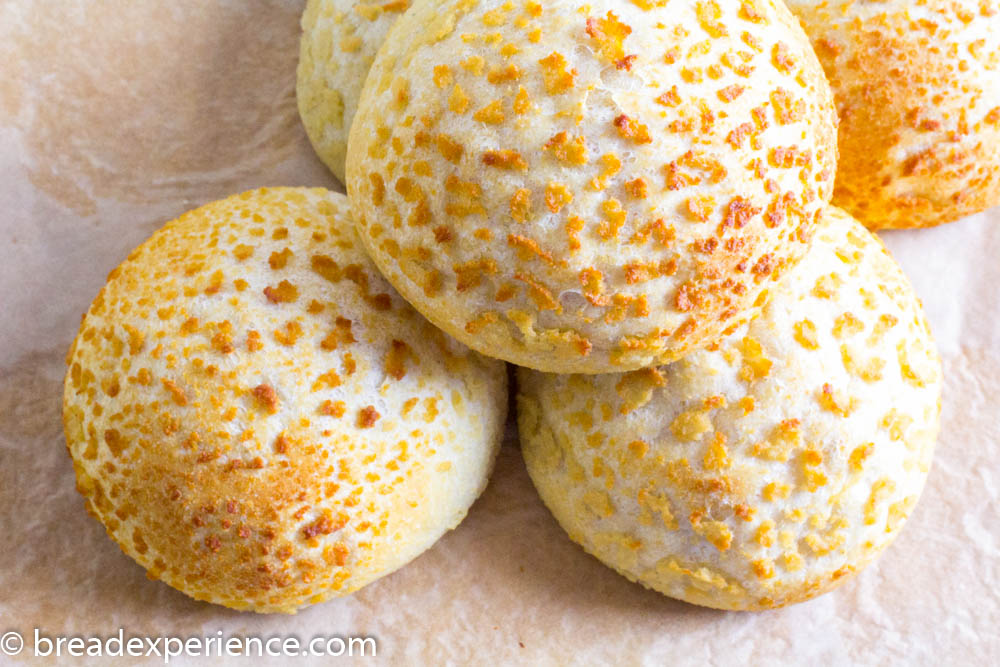
Who are the Bread Baking Babes?
We are a group of bread bakers who get together every month and bake bread! We have a Facebook group if you’d like to bake along. New recipes are posted every month on the 16th.
Karen, of Karen’s Kitchen Stories, is the host kitchen this month. If you want to bake along with us as a Buddy, check out her blog for details on how to participate. She’ll send you a Buddy badge, and feature you in the round-up. Deadline to get your e-mail to her is June 29th.
Check out the different variations for this month’s bake:
Karen’s Kitchen Stories – Karen (host kitchen)
Bread Experience – Cathy
My Diverse Kitchen – Aparna
A Messy Kitchen – Kelly
Judy’s Gross Eats – Judy
Feeding My Enthusiasms – Elle
blog from OUR kitchen– Elizabeth
Thyme for Cooking – Katie (roundup)

Happy Baking!
Cathy
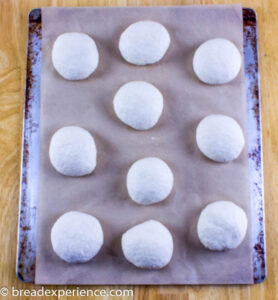
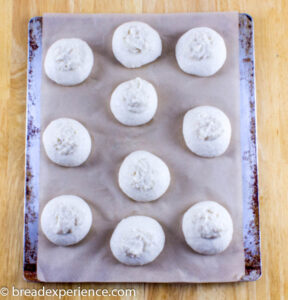
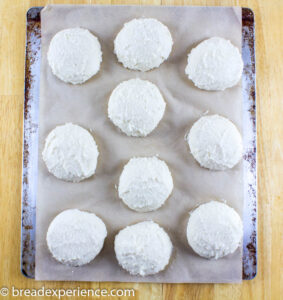
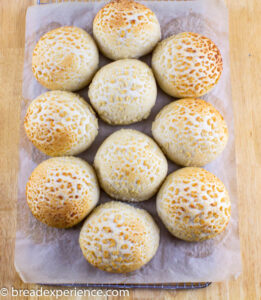
Karen says
Yours look so perfect! I love your adaptations too. Thanks for baking with me!
Cathy says
Thank you for choosing this one! I loved these Tiger buns. I’m hooked on Ralph’s method for the Dutch crunch topping.
Kelly says
Beautiful topping! I love how they all turned out and spread into that appealing pattern.
Cathy says
Thanks Kelly! I really enjoyed the topping on these.
Elizabeth says
I’m with you: “toasted, and spread with butter” is the way to go! But. The rolls are also perfect for burgers.
What beautiful photos. I like your idea of using brown rice flour instead of white rice. The second time I tried the topping (I used the back of a dessert spoon to spread the sludge), I mixed white rice flour, finely ground toasted bread crumbs from our wild-yeast bread, and a small amount of oatmeal (quick oats) with the sugar, salt, oil, and yeast. With the addition of the oatmeal, the topping worked even more brilliantly than the first try without oatmeal! We really liked the flavour too.
But next time, I want to try grinding sesame seeds and using them instead of the oatmeal.
So many possibilities!
Cathy says
Oh my! Your topping with the oatmeal sounds great! I need to try that!
Elizabeth says
I think you do, Cathy! While we didn’t really taste the oatmeal, it definitely added that extra something to the topping. I suspect that it has to be quick oats that are used OR maybe rolled oats would work too, as long as they were soaked overnight.
Cathy says
Sounds yummy!
Katie Zeller says
I love the colors of your rolls!
Cathy says
Thanks Katie!